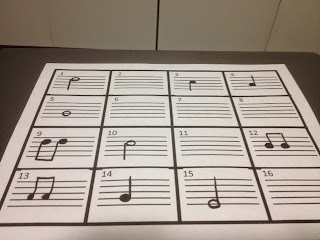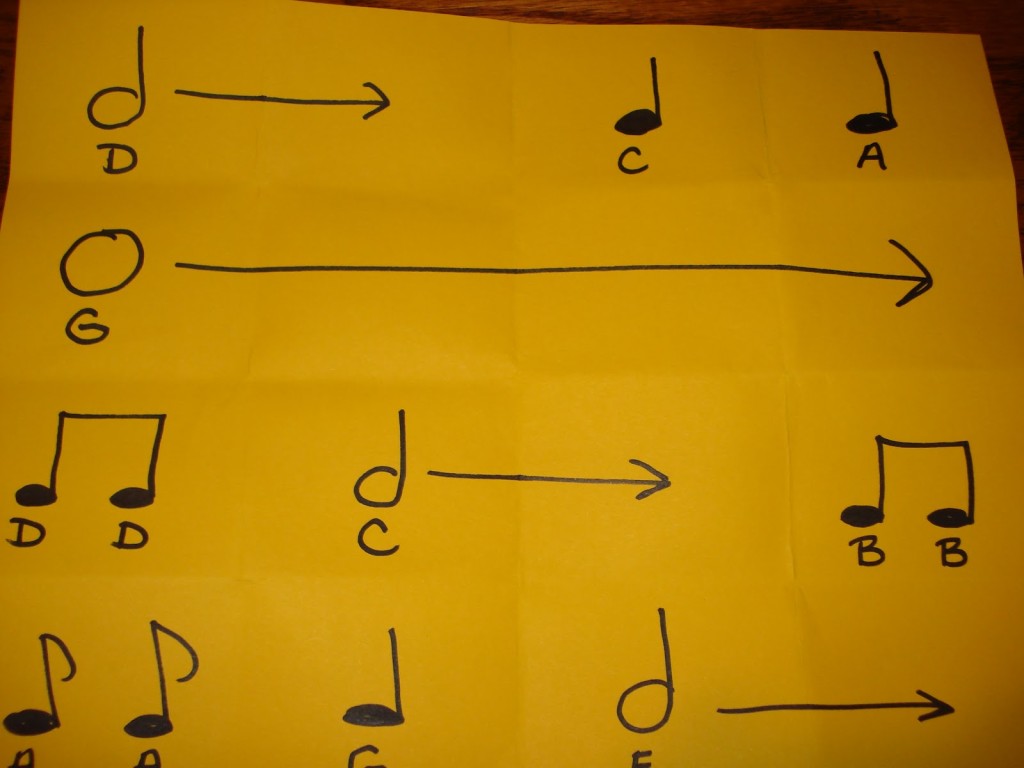Based on my previous post, I am not ashamed to admit that I was thrilled when I was able to help my students travel through a composition process that got them to where they could create work that looked like this. However, when I consider this work I can see room for improvement in the lesson I present.
1. This composition is randomly rather than musically produced. At this point in the process only a few of my students demonstrate any notion that their piece should start or end on tonic. This happens because even though they have an instrument (the recorder) that they can use to hear their piece, it is not something they can use well because recorders are loud and they are composing in a room filled with other students also using the recorder to test out their compositions.
2. This composition has not been placed on the staff. When I first started taking students through the process of music composition, once my students were able to compose 16 beats of rhythm and then attach a pitch I would hand them some staff paper and hope for the best…. Well…. I didn’t get the best… I caused frustration and then we would be out of time, and there wasn’t really good way to move further through the process.
 In order to address the first problem I plan on including a mini lesson about the relationship between the scale degrees and the importance of ending on “do” . I also plan waiting for the full project until my students can play low d, low e and f sharp on the recorder so that we can compose in D Major pentatonic. If a particular class isn’t ready to move that far on recorder, then I will have them create their compositions for xylophone in C Major.
In order to address the first problem I plan on including a mini lesson about the relationship between the scale degrees and the importance of ending on “do” . I also plan waiting for the full project until my students can play low d, low e and f sharp on the recorder so that we can compose in D Major pentatonic. If a particular class isn’t ready to move that far on recorder, then I will have them create their compositions for xylophone in C Major.To address the second problem, I plan is to invite my students to take their chart and transfer their work to the chart below that has a staff.
I plan on testing both charts and hope to report back here about which one had more success.
FREE DOWNLOAD! HERE!




I like your blog! I just nominated you for the Liebster Award! http://bethsmusicnotes.blogspot.com/2015/02/liebster-award.html